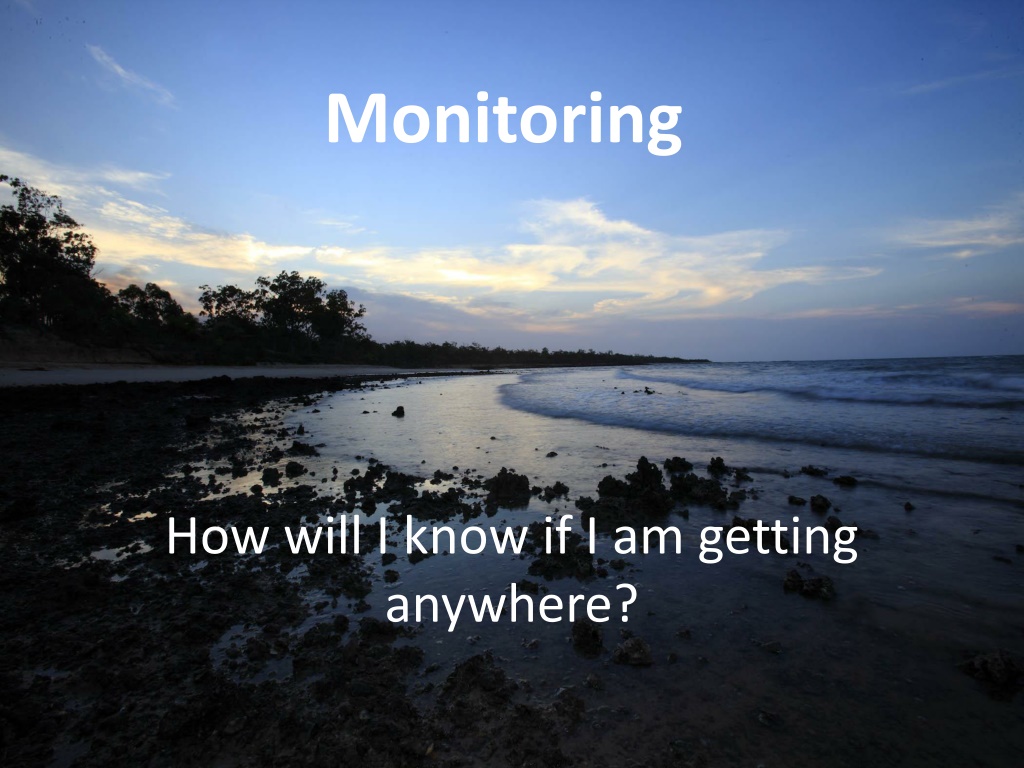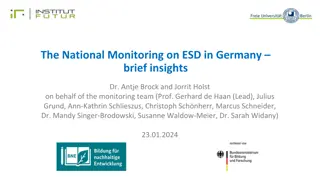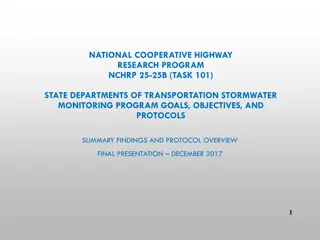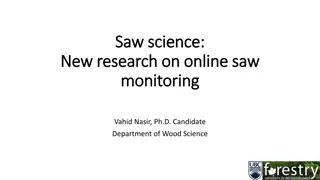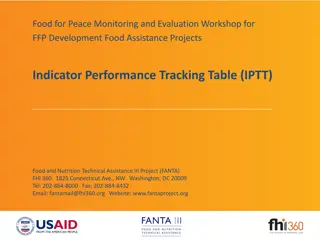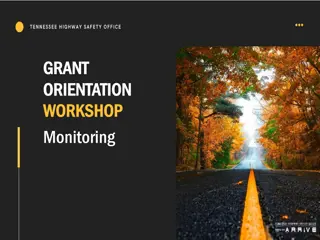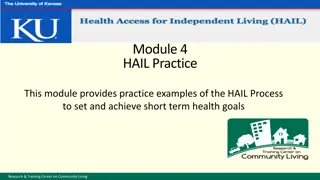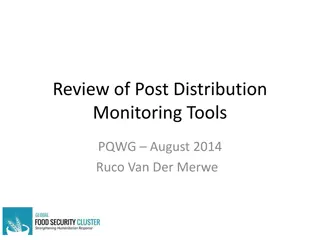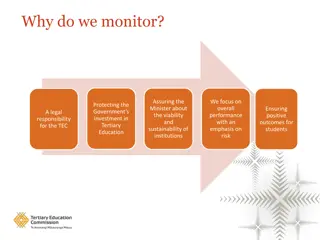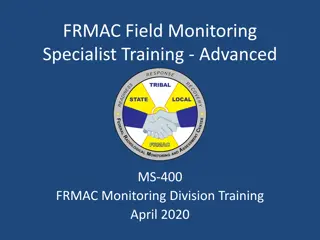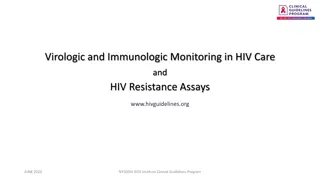Understanding the Importance of Monitoring in Achieving Goals
Monitoring plays a crucial role in ensuring the effectiveness and efficiency of our plans and actions. Through continuous monitoring, we can assess progress, make necessary adjustments, and ultimately determine the impact of our work on desired outcomes. Neglecting monitoring can lead to ineffective management and hinder our ability to achieve success. Embracing monitoring as a key component of our planning process can enhance transparency, accountability, and overall performance.
Download Presentation

Please find below an Image/Link to download the presentation.
The content on the website is provided AS IS for your information and personal use only. It may not be sold, licensed, or shared on other websites without obtaining consent from the author. Download presentation by click this link. If you encounter any issues during the download, it is possible that the publisher has removed the file from their server.
E N D
Presentation Transcript
Monitoring How will I know if I am getting anywhere?
Goals Strategies Road Maps Measures Deciding what the plan is about Telling ourselves and others Making the plan Work Plan & Timeline Budget Implement Getting data Looking at results Adapting the plan Deciding if the plan is working Doing and monitoring the work
Making the Plan Monitoring Overview presentation Why we do monitoring The three main layers of monitoring Making a monitoring plan Tips for a monitoring plan
Making the Plan Monitoring Knowing if our plan is working Monitoring help us to know: Are our actions working? Is our work being effective & efficient? Are our targets or the threats getting better or worse? Can we correct course if we need to? Is it all worthwhile? Donors, partners and managers are demanding greater transparency and accountability
Making the Plan Monitoring Knowing if our plan is working Monitoring seen as last step - often neglected Many examples of ineffective monitoring failing to inform ineffective management
Making the Plan Monitoring Knowing if our plan is working Monitoring is a key part of knowing the impact of our work We need to monitor the things that will improve management And actually use that monitoring to improve management
Making the Plan Monitoring Overview presentation Why we do monitoring The three main layers of monitoring Making a monitoring plan Tips for a monitoring plan
Making the Plan Monitoring Three layers of monitoring Inputs / Outputs (Strategies / Actions) Are we using the plans we have made? Outcomes (Threats) Are our actions having their intended outcomes? Impact (Targets) How is the country we care about doing? How are threats to country changing? Is the capacity to improve country changing?
Making the Plan Monitoring Three layers of monitoring Wetlands healthier Healthy Wetlands Impact (5-10 years) Target Goals By 2020 pigs have less impact on country Less country is impacted by pigs Outcomes (1-3 years) Threat Goals Implement feral animal control Feral control being done Strategies Outputs (every year) Pig control in wetlands Record pig management efforts Actions
Making the Plan Monitoring Three layers of monitoring Motivate farmers to change to low-water crops Agricultural practices change River flow regime restored Surface water diversion reduced Salmon 6 5 4 3 2 1 1. IMPACT: Numbers of adults returning to spawn 2. OUTCOMES: Water flow measurements 3. OUTCOMES : Volume of water withdrawn for agricultural purposes 4. OUTCOMES : Hectares of farm land converted from water-intensive crops to low-water need crops 5. OUTPUTS: Strategic Actions and Action Steps implemented 6. OUTPUTS: Resources Spent (Staff & $$$)
Making the Plan Monitoring Overview presentation Why we do monitoring The three main layers of monitoring Making a monitoring plan Tips for a monitoring plan
Making the Plan Monitoring How we do this step Figure out who you need to report to (define audience and interest) Select which indicators you will use (what) Work out how to collect information on your indicators Schedule who needs to do what and when (when, where, and who) Threats = Pigs Target = Healthy Wetlands Record data Pig damage # of pigs shot
Making the Plan Monitoring Who needs to know? Who will see and review the information and data you collect Helps you consider the monitoring design and methods Audiences are: Project team (rangers / managers); funders; Executive / Board; Partners
Making the Plan Monitoring Example for Board / funders
Making the Plan Monitoring Selecting your indicators What are you actually going to measure? Use the minimum resources to provide you with the minimum information needed to best adapt Reduce, reuse, recycle mine the road map Indicators from the work you ve already done Look to your Targets, Threats and Goals Good (SMART) Goals and Strategies will lead to good indicators
Making the Plan Monitoring Picking indicators
Making the Plan Monitoring Using the road map Focus monitoring efforts on the core assumptions you have made in your project represented by the result chain Increased numbers of pigs caught in traps Regional pig trapping program More traps set up Reduced numbers of pigs Healthy wetlands # traps deployed # pigs caught Ranger time on pig traps Reduction in pig damage Increase in vegetation cover and fish caught Area traps deployed # trap set # traps purchased $ on program
Making the Plan Monitoring Lessons from the School of Hard Knocks! The Health table is a good place to find ideas for indicators but you won t need to monitor everything there. Beware a monitoring plan you will never do. Or worse, one you will do for a year or two and then stop. Never monitor something you can t or won t do anything about.
Making the Plan Monitoring A good indicator A good indicator should meet the following criteria: Measurable:you can record something and analyzed it. Precise:Defined the same way by all people. Consistent:Consistent over time so that it always provides comparable measurements. Sensitive:Changes in response to actual changes in what you are measuring. Sustainable: able to be used with the resources you have
Making the Plan Monitoring Prioritize your monitoring budget Keep it as simple as possible - focus on essential monitoring Where possible prioritise measures that address a few items (goals, threats etc) or activities with co- benefits Consider available resources Where possible, incorporate monitoring into existing work or research Consider availability of base-line data Invite someone with experience to peer review monitoring plan
Making the Plan Monitoring A good method Accurate: minimal error Reliable: consistently repeatable Cost-effective Feasible: people, material and financial resources Appropriate: environmental, cultural, and political context
Making the Plan Monitoring Examples of Monitoring Methods Quantitative data Tracking project records Formal survey Cyber-tracker Qualitative data: Key informant interview Focus group discussion Direct observation Social (participatory) mapping
Making the Plan Activity Creating a Monitoring Plan Strategy Regional trapping program Cost / year $500 Indicator Method Frequency Location Who Source Ranger time on pig traps Ranger time sheets GPS sites Annual On-site Head ranger Internal # traps set up Annual Trap sites Trap locations & control Ranger $500 Internal Pig damage Damage density data Bi-Annual Ecologist + rangers $5,000 TBD Pig damage # pigs trapped Target = Healthy Wetlands
Making the Plan Monitoring Overview presentation Why we do monitoring The three main layers of monitoring Making a monitoring plan Tips for a monitoring plan
Making the Plan Monitoring Tips to reduce monitoring costs Consider low-cost, qualitative options rather than no monitoring Consider less frequent monitoring visits rather than no monitoring Use partner data whenever possible Engage local people & volunteers in monitoring efforts
Making the Plan Monitoring Remember Monitoring requires time and money and needs to be in your work plans & budgets but it doesn t always need to be complicated or costly Monitoring data must be analyzed and results used to inform our next decisions
Making the Plan Monitoring Hints This step is probably best completed with a small group Use external expertise to help there are likely to be things that will need specialist advice Look for measures and techniques that are linked to day to day / community activities they are more likely to continue Don t discount community / traditional indicators Some data and results are better than no data at all you can refine your work as you go
Doing and Monitoring the Work Monitoring Additional Resources
Making the Plan Monitoring Exercise Look across your Road Map and identify the points where an indicator would be most critical to demonstrate the causal links in the chain - focusing on those if-then steps with greatest uncertainty Further prioritize your indicators based on your monitoring budget For priority indicators, select your monitoring methods and how you will collect the information Decide who will collect the data and when What changes could result from the information Draw up a table to record your decisions
